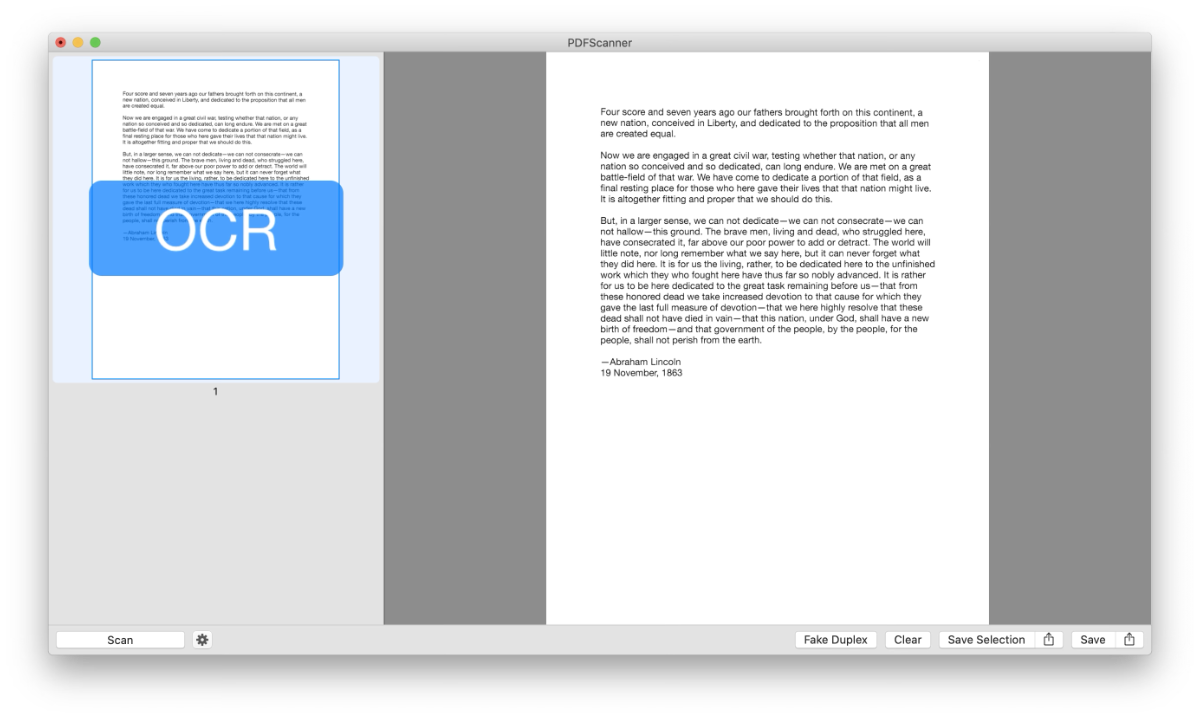Few companies know how to make beautiful software and functional hardware.
Take the Epson ES–500W scanner, for example. It’s a workhorse of a document scanner—almost as good as the Fujitsu ScanSnap it replaced—but the software that comes with it leaves something to be desired. It’s not so bad that I don’t want to use the scanner, but the experience is not what it could be.
I recently found PDFScanner by Felix Rotthowe. PDFScanner is designed to scan documents, clean them up, and make them searchable. It works well. And it’s more of a macOS app than most of the software that comes bundled with scanners.
PDFScanner works with any TWAIN scanner. Basically, if you can use your scanner with the Image Capture app that comes with your Mac, it will work with PDFScanner. It works with my ES–500W and it works with the flatbed scanner in our all-in-one printer. (If you know whether it will work with a ScanSnap, let me know in the comments!)
When you launch PDFScanner, you start at an empty workspace.

The first thing you’ll want to check is the settings. Click the gear next to the Scan button in the lower-left corner of the main window.
These settings are explained in detail in PDFScanner’s help, but there are two settings which I want to highlight briefly:
- Deskew after Scan. With some scanners, the scanned image may be crooked, or skewed. I have this problem with the ES–500W; this wasn’t a problem with the ScanSnap. If you have this problem, this setting will straighten out the text.
- OCR after Scan. PDFScanner can recognize the text in the document you just scanned and can make it searchable and selectable. (It’s not editable—you’ll need an app like PDF Expert, PDFpen or Adobe Acrobat for that.) This will, however, let Spotlight index the contents of the PDF and let you copy the text to another document. The file size is marginally larger, but it’s a significant increase in functionality. I recommend turning this on.
Scanning is quick and easy. Load your document in the scanner and click the Scan button. PDFScanner will show thumbnails and a preview of the document as it works. If you have deskew and OCR enabled (and you should), you can watch its progress as it processes each page.

If you have a document scanner, you can scan multiple pages at once. If you have a flatbed scanner, you can only do one page at a time. Not a problem! While PDFScanner is processing the scan in the background, load your next page and click Scan again. Repeat until you have scanned the entire document.
Another useful feature is the fake duplex mode. If your document scanner doesn’t support duplex scanning (scanning the front and back sides in one pass), PDFScanner handles the complexity for you. Scan all the fronts, scan all the backs, and click Fake Duplex. PDFScanner will put the pages in the correct order.
When the pages have been processed, you can save the selected pages or the entire document. You can also share them with any app via the standard system share menu.
Now click Clear to clear the workspace and get ready for your next document!
Scanners come with the software you need to use it out of the box. That’s fine—they’re selling you a complete package.
If the bundled software is terrible, see if you can find an alternative. It could turn your mediocre experience into a brand-new product—one you’ll enjoy using.
PDFScanner is $18 on the App Store.
Question: What app(s) do you use to scan? Share your thoughts in the comments, on Twitter, LinkedIn, or Facebook.

